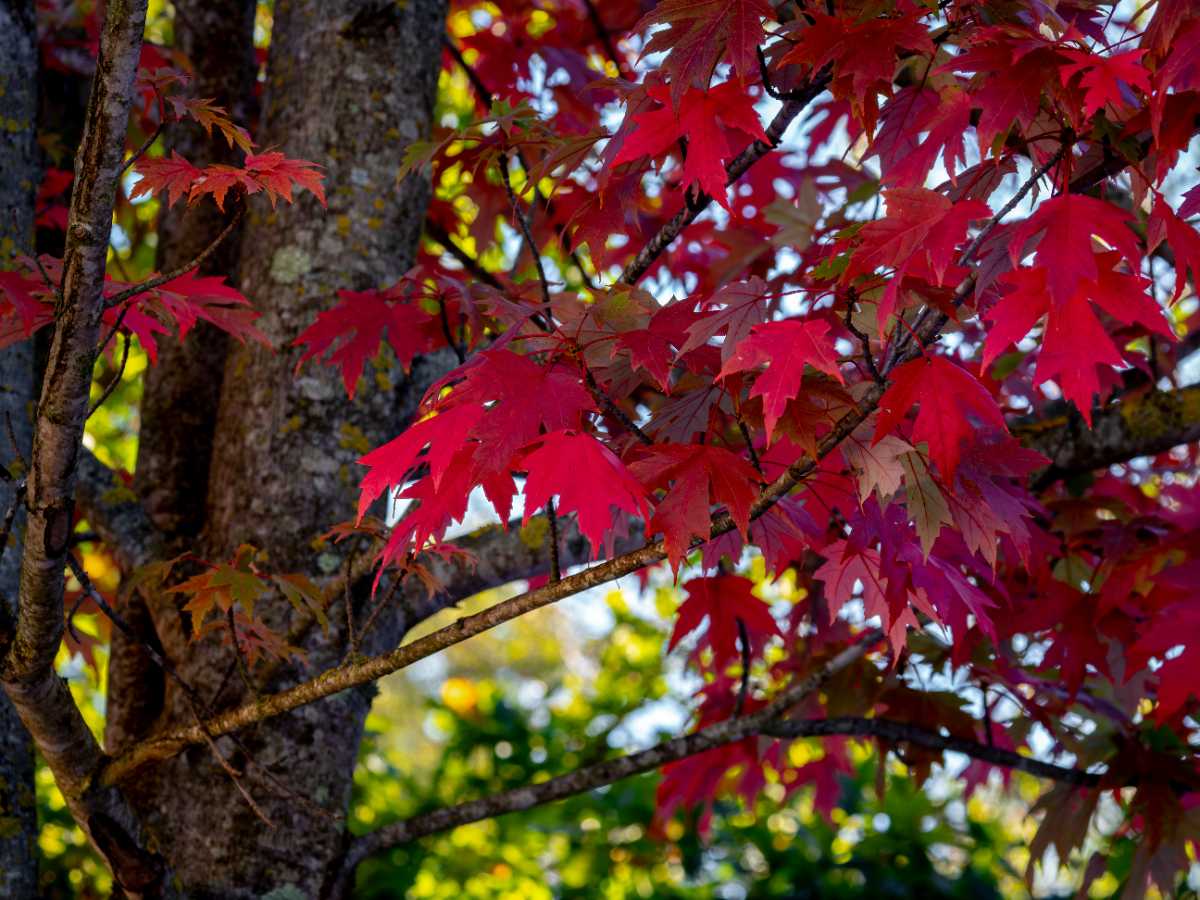
Washington, D.C., is known for its cherry trees, but planting these best native trees in your yard will add color, draw pollinators, and bring appealing shapes to your home landscape.
These are my personal best native trees to plant in D.C.-area yards:
1. Flowering Dogwood

The flowering dogwood is known to be one of the most spectacularly beautiful flowering trees. In April and May, trees erupt with long-lasting, showy blooms of white or pink. The flowers are actually tiny yellowish-green clusters surrounded by 4 petal-like bracts (modified leaves) that create the appearance of blooms 3 to 4 inches in diameter.
Flowering dogwood trees grow on average 20 to 30 feet tall with a similar-sized spread. This native tree grows in a variety of soils but prefers those that are well-draining and slightly acidic.
2. Serviceberry

Serviceberry is a great native species to plant if you’re looking to encourage pollinators, birds, or other small animals to visit your yard.
White flowers appear on serviceberry trees in early spring before leaves open. Flowers then develop into small green berries that redden and turn a dark purplish-black in early summer as they ripen. In the fall, leaves change to brilliant orange-red.
Serviceberry grows to 25 feet, either as a single-stemmed or multi-stemmed tree. These trees add about 2 feet of growth annually.
3. Eastern Redbud

The Eastern redbud puts on a brilliant show in the spring when clusters of small magenta buds open up into rosy pink blossomss. Shortly thereafter heart-shaped leaves unfurl in a red color darkening to a deep green over the summer.
Come fall, the leaves turn a bright canary yellow.
Growing to a maximum of 30 feet tall, the Eastern redbud is one of the most commonly planted trees in residential gardens. The Eastern redbud grows in a range of soils, tolerating acid and alkaline conditions, loams, sand, and even clay soils.
4. Red Maple

Red maple adds a majestic touch to landscape designs. Leaves vary from three- to five-lobed with the distinctive V-shaped angles between the lobes and turn a stunning shade of red in the autumn.
In cultivated settings, red maples easily reach 60-feet tall with a canopy spreading 35- to 45-feet in width.
Red maple has the greatest distribution of all tree species from north to south along the East Coast. It can be found from Eastern Canada, down to Florida, and all the way over to east Texas. Red maple prefers slightly acidic, moist soils in full sun locations.
5. Oak

With more than a dozen oak tree varieties native to the D.C. area, you have plenty of options to choose from. Oak trees can be divided into two main categories: red oaks and white oaks. Red oaks have leaves with pointed lobes; the lobes of the leaves on white oaks are rounded and smooth.
Oaks are easy to garden under and are incredibly hardy and resilient. These long-living trees have been known to survive for hundreds years.
6. American Elm

The American elm, another iconic tree species, is trying to make a comeback in urban landscapes. This graceful tree can tower 100-feet above the ground and was historically planted along city streets because of its vase-like shape.
In the 1930s an accidental introduction of a fungus known as Dutch elm disease ravaged stands of American elms. By the late ’70s, less than 45% of the original urban population still existed, making Dutch elm disease one of the most devastating tree diseases in the world.
Research has determined cultivars that are resistant to the disease, to help increase the long-term recovery of the American elm as a canopy tree. Resistant cultivars include New Harmony, Princeton and Valley Forge.
Need help selecting trees or other plants for your yard? LawnStarter’s Washington, D.C., landscaping pros are just a call or few clicks away.
Main Image Credit: juancajuarez / Adobe Stock